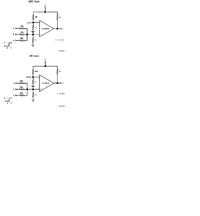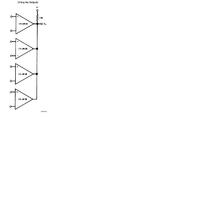pd123
Junior Member level 1

I found the following two images in the datasheet of LM399N. This give the basic circuit of the AND and OR gates using op-amp. I cannot understand their working. Perhaps I am missing some vital principle of Electrical basics. Please help me understand the working of the circuits.


I am actually working on a circuit which has several inputs whose values are either 20mV or 400mV. Now I want to make a circuit which give an output when any of the inputs is 400mV. How can this be done?


I am actually working on a circuit which has several inputs whose values are either 20mV or 400mV. Now I want to make a circuit which give an output when any of the inputs is 400mV. How can this be done?





